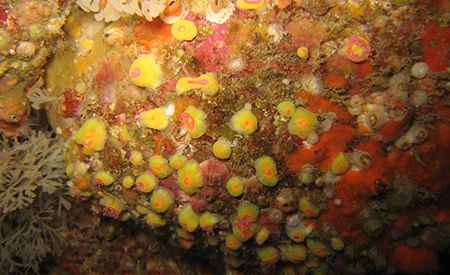Type of resources
Available actions
Topics
Keywords
Contact for the resource
Provided by
Years
Formats
Representation types
status
Scale
-

The main objective of this atlas is to summarise the knowledge acquired on biofouling, and more generally on communities of living organisms on hard substrates, available today in mainland France and the French overseas territories, in order to anticipate the issues that this phenomenon will pose in an ORE context. The atlas is based on the most exhaustive bibliographical analysis possible, including A-level scientific articles, reports (training courses, monitoring, studies), and works presenting the results of studies conducted in French waters
-
Auteur(s): Darteyron Bernard , Projet d'un centre de thermalisme en milieu rural dans le département des Landes sur quatre communes voisines de Dax
-
Auteur(s): Hondelatte Raphaëlle , Compte-rendu de toutes les phases d'un projet de reconversion d'un chai en appartement, quai des Chartrons à Bordeaux.
-
Auteur(s): Delanne Hubert-Alexandre , Dans une première partie, l'auteur témoigne de sa sensibilité à la question du développement durable et à ses incidences dans le domaine de l'architecture, par l'intermédiaire de la norme HQE (Haute Qualité Environnementale). Dans cette perspective, il développe, ensuite, une analyse critique de l'évolution du logement social en France, et présente l'idée d'habitat intermédiaire, comme solution de compromis entre les aspirations individualistes d'une part, et la nécessité de lutter contre l'étalement urbain, d'autre part. Le quartier Vigon, à Mimizan (Landes), lui semble propice à une expérimentation de cette forme d'habitat, dans le souci de s'adapter à la diversité des modes de vie de ses occupants, tout en préservant une densité urbaine suffisante et en intégrant, dans la construction, les principes de la HQE.
-
Auteur(s): Brun Jean-Pierre, Castagne Michel , La mer matrice originelle de toute vie, est encore présente lorsque l'homme ressent la nécessité de soins pour une remise en forme. L'aspect technique de la plate-forme, sa forme géométrique, le choix des matériaux, l'architecture high tech de la structure en tubes et en câbles qui soulagent la structure tridimensionnelle de la toiture, tous ces éléments aboutissent à une architecture géométrique, presque industrielle. Lorsque le curiste arrivera dans le centre, après avoir franchi la passerelle, il pénétrera dans un monde différent, fait de formes douces évoquant la fluidité de l'eau, image de ce retour aux sources de la vie
-
Auteur(s): Caplanne Sabine , L'architecte n'étant pas maître de la pédagogie pratiquée dans les différents établissements, je me limiterai à proposer des formes permettant une meilleure appréhension de l'espace tant par les lycéens (et enseignants) que par la collectivité locale
-
Auteur(s): Bonneau Lila , Projet d'un ensemble de bâtiments sur une exploitation viticole, comprenant des locaux techniques liés au travail du vin et des éléments dédiés à la mise en valeur de vestiges archéologiques présents sur le site. L'auteur s'appuie sur une analyse sensible de l'esprit du lieu, avec la double empreinte d'un patrimoine et d'un terroir. Photogr., images de synthèse, cartes, plans, coupes, élévations
-
Auteur(s): Dupuy-Schoell Isabelle , Interventions sur le front de mer à Hossegor tout en tenant compte des règles qui régissent ce site protège.
-
Auteur(s): Birault Jacques , Réutilisation des entrepôts de la Chambre de Commerce, situés cours du Médoc, pour en faire un lieu d'échanges et de communication
-
Auteur(s): Sémondès Renaud , Projet de reconversion du pont tournant du Pertuis en pont urbanisé. La proposition se situe au coeur du développement du secteur des bassins à flot et entend maintenir la mixité des populations de routiers et plaisanciers comme des personnes qui travaillent in situ. Le programme comprend un espace d'hébergement, des espaces d'activités physiques, de services traditionnels, des espaces vides ainsi qu'un espace public pour une utilisation piétonnière du lieu.
 Catalogue PIGMA
Catalogue PIGMA